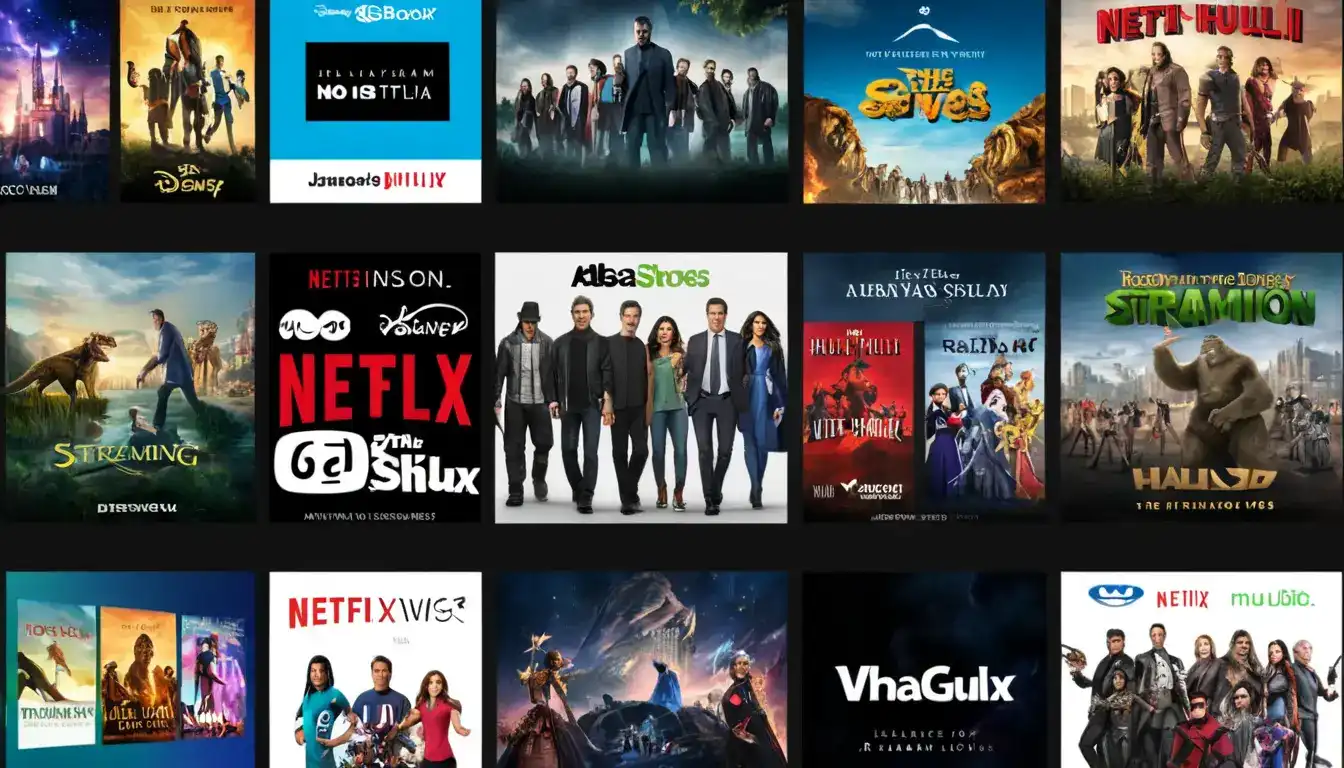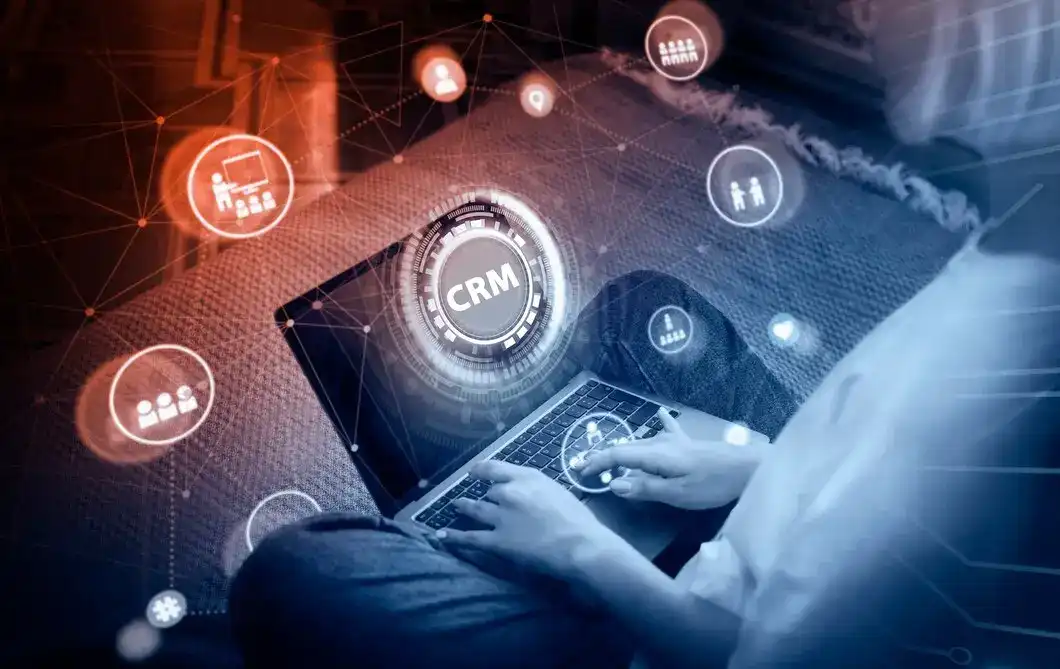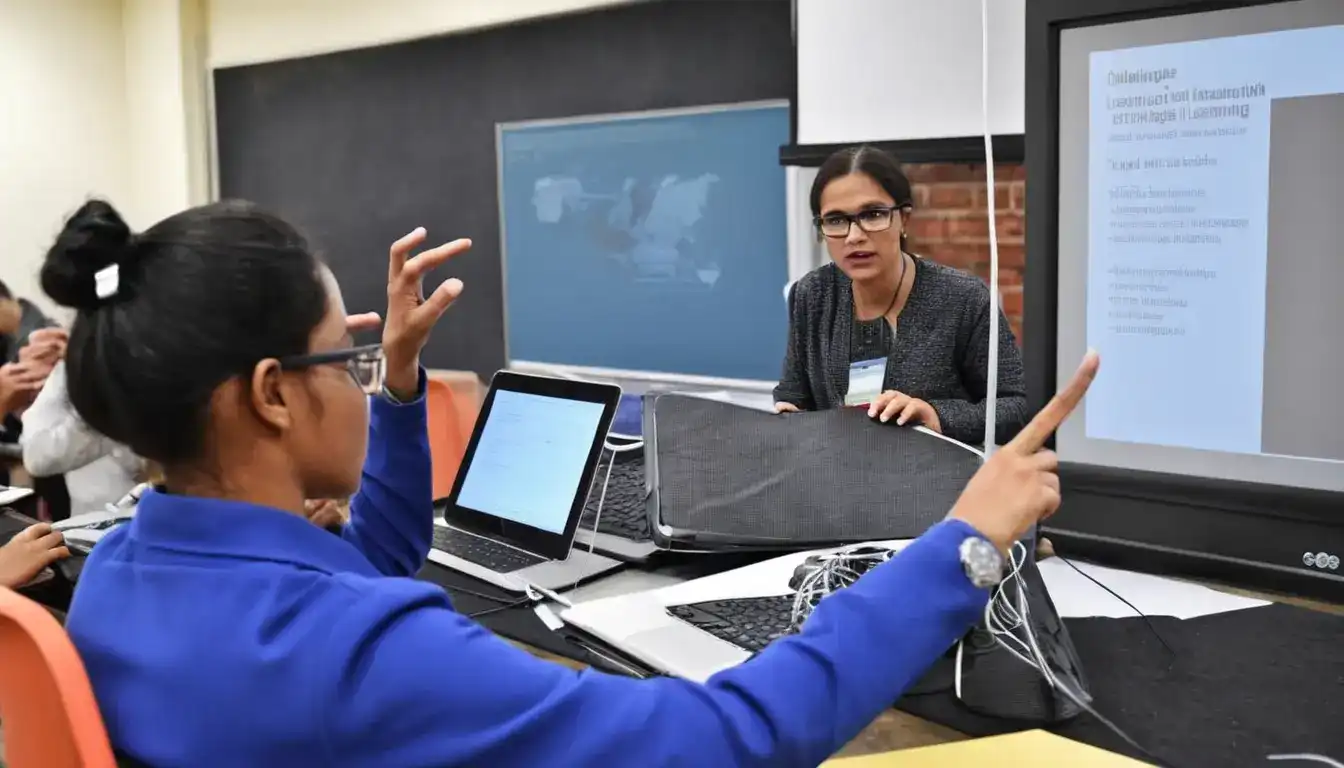Bridging the Digital Divide: Ensuring Everyone Has Access to Technology
Emily Willis

Photo: Bridging the Digital Divide: Ensuring Everyone Has Access to Technology
The digital age has transformed how we live, work, and learn. From online education and remote work opportunities to accessing essential services and staying connected with loved ones, technology plays an increasingly crucial role in our daily lives. However, a significant portion of the population remains on the other side of a widening gap – the digital divide.
The digital divide refers to the unequal access to technology, the internet, and the digital skills needed to navigate the online world. This disparity can have serious consequences, limiting opportunities for education, employment, and overall well-being.
Who Falls Through the Gap?
Several factors contribute to why individuals or communities might lack access to technology:
Economic Disadvantage: The high cost of devices, internet plans, and data can be a significant barrier for low-income households.
Geographic Location: Rural areas often have limited access to reliable internet infrastructure, particularly high-speed broadband connections needed for seamless online experiences.
Digital Literacy: Lack of familiarity or comfort using technology can be a hurdle, even if devices and internet are available.
Age and Disability: Older adults or individuals with disabilities might face challenges navigating technology due to physical limitations or unfamiliarity.
The Impact of the Digital Divide
The consequences of being left on the wrong side of the digital divide are far-reaching:
Educational Inequality: Online learning platforms have become increasingly prevalent. Students without access to technology risk falling behind in a world where digital resources are essential for academic success.
Limited Job Opportunities: Many jobs require strong digital skills and the ability to utilize online tools. Lack of internet access or digital literacy can significantly limit employment prospects.
Social Isolation: Staying connected with family and friends often happens online. Those without access miss out on vital social interaction and the sense of community fostered by digital platforms.
Limited Access to Information and Services: Essential services like healthcare, government assistance, and banking are increasingly moving online. Individuals without internet access face difficulties accessing these resources.
Building Bridges: Strategies for a More Inclusive Digital Landscape
Fortunately, there are solutions to bridge the digital divide and ensure everyone has the opportunity to participate in the digital world:
Government Initiatives: Policymakers can play a crucial role in expanding affordable internet access, particularly in underserved areas. This could involve subsidies, infrastructure development programs, and initiatives promoting digital literacy.
Community Programs: Non-profit organizations and community centers can offer free or low-cost access to technology and training programs. These programs can teach basic digital skills, online safety practices, and how to navigate specific online tools.
Public-Private Partnerships: Collaboration between governments, businesses, and non-profit organizations can leverage resources and expertise to create comprehensive solutions.
Affordable Devices: Technology companies can develop and promote low-cost devices and data plans to make internet access more accessible. Initiatives like refurbished device programs can offer viable options.
Digital Literacy Training: Programs designed to teach basic digital skills are essential. Focus on user-friendly interfaces and offer training tailored to the needs of different demographics, like seniors or individuals with disabilities.
Digital Inclusion in Education: Schools and educational institutions can play a critical role by providing students with access to technology and equipping them with the necessary digital skills to thrive in an online world.
Bridging the Gap: A Collaborative Effort
Bridging the digital divide requires a multi-pronged approach involving governments, businesses, and community organizations working together. Initiatives focused on expanding access to technology, building digital literacy skills, and ensuring affordability are crucial. By working collaboratively, we can create a more inclusive digital landscape where everyone has the opportunity to participate in the vast opportunities of the online world.
The Benefits of a Connected World
Closing the digital divide isn't just about ensuring equal access to technology; it's about empowering individuals and communities. By equipping everyone with the tools and skills needed to navigate the online world, we can unlock a future with:
Increased Educational Opportunities: Digital resources can enhance learning experiences, personalize education, and provide access to a wealth of knowledge for all individuals.
Improved Employment Prospects: A skilled digital workforce is crucial for economic growth. By bridging the digital divide, we can ensure everyone has the opportunity to compete in a technology-driven job market.
Greater Social Inclusion: The internet fosters connection and a sense of community. By closing the digital divide, we can ensure everyone has a voice and can participate in the online world.
Enhanced Access to Services: From healthcare to government assistance, online platforms offer convenient access to essential services. Bridging the divide ensures everyone can benefit from these resources.
In conclusion, the digital divide is a complex challenge with significant consequences.
Latest ✨
View Allvibrant cultures of Mexico, China, and India, highlighting their unique customs, traditions, and ways of life. It emphasizes the importance of immersing oneself in these cultures to connect with the soul of a place and create lasting memories.
Emily Willis
Virtual reality (VR) and augmented reality (AR) are transforming the entertainment industry by offering immersive experiences that blur the lines between the real and virtual worlds. VR completely transports users into computer-generated environments, while AR overlays digital elements onto the real world.
Emily Willis
The Pacific Ocean is home to remote and enchanting islands that offer untouched natural beauty, rich cultures, and unique experiences for adventurous travelers. Tips for exploring these hidden gems include researching your destination, packing light, respecting local culture, exploring responsibly, and staying safe.
Emily Willis
concept of "sports for social good," which uses the power of sports to address social issues and create positive change. It highlights the impact of sports on diversity, gender equality, youth development, community engagement, health, and peacebuilding.
Emily Willis
Business
View All
August 5, 2024
How to Create Engaging Content and Convert Visitors to Customerscreating engaging content to attract and retain customers in the digital age. It provides strategies for understanding the audience, setting content goals, creating high-quality content, using storytelling and emotional connection, and optimizing content for conversions. It also covers content formats and distribution, measuring and analyzing content performance, and building relationships with influencers and user-generated content.
Emily Willis

August 5, 2024
How to Improve Your Leadership Skillsleadership skills in achieving organizational success. It discusses various aspects of leadership, including understanding leadership, identifying leadership styles, developing effective communication skills, building trust and credibility, developing emotional intelligence, delegating tasks effectively, embracing continuous learning, fostering a positive work culture, making tough decisions, developing a growth mindset, and building a strong team.
Emily Willis

August 5, 2024
Master Your Business Financial Plan in 5 Stepssecrets to mastering your business financial plan with five simple steps. Learn how to analyze financial data, set measurable goals, and create a comprehensive strategy for success. Unlock profitability, make confident decisions, and ensure a bright future for your business
Emily Willis
Economy
View AllBest Secured Loans for Debt Consolidation with Low Interest Rates | Compare Top Lenders & Save Money on Monthly Payments
Read MoreThe digital economy is rapidly changing the job market, with trends such as remote work, the gig economy, automation, e-commerce, cybersecurity, digital skills, and changes in traditional industries having significant implications. These trends offer both opportunities and challenges, requiring individuals and organizations to adapt by embracing flexibility, investing in continuous learning, and staying abreast of technological advancements in order to thrive in this evolving landscape.
Read MoreIn today's rapidly changing economic landscape, innovation and resilience are more important than ever. Innovation drives progress and competitiveness by creating new ideas and solutions to meet market needs. Resilience helps businesses withstand shocks and bounce back from setbacks by planning strategically and diversifying resources.
Read MoreEntertainment
View All
August 4, 2024
The Latest Music Trends, Artists Influencing Pop Culture, and How Digital Platforms Facilitate the Distribution of Music GloballyThe music industry is constantly changing due to consumer preferences, technology, and the influence of artists. Digital platforms have revolutionized music creation, distribution, and consumption, leading to genre fusion, the rise of independent artists, and collaborative projects. Influential artists like Billie Eilish, BTS, and Taylor Swift have shaped pop culture globally. Streaming services, social media, and direct-to-fan engagement have transformed music distribution. Digital platforms also promote cultural diversity and inclusivity, expand markets and revenue, and drive technological advancements. The industry is also focusing on sustainability and ethical practices. To succeed in the future, stakeholders must embrace digital transformation and champion inclusivity.
Emily Willis

August 5, 2024
Video Games: Enduring Appeal, Immersive Worlds, and Diverse Genresenduring appeal of video games, highlighting their ability to transport players to fantastical realms, challenge their minds, and foster connections with others. It explores the magic of immersive worlds, the vast array of genres available, and the social power of gaming.
Emily Willis

August 5, 2024
Music Universal Language: Connecting and Inspiring Across CulturesMusic has the power to transcend language barriers and connect people on a deep emotional level. It serves as a bridge between cultures, fostering understanding and appreciation for diversity. The universality of rhythm and melody creates a sense of unity, while the diversity of musical styles allows for exploration and creativity.
Emily Willis
Health
View AllRegular exercise is essential for maintaining both physical and mental health. It helps with weight management, cardiovascular health, muscle strength, energy levels, and sleep quality. Exercise also reduces stress and anxiety, improves mood, cognitive function, and self-esteem, and lowers the risk of depression. Different types of exercises, such as aerobic, strength training, flexibility, balance, and mind-body exercises, contribute to overall health. To start and maintain an exercise routine, it is important to start slowly, set realistic goals, find enjoyable activities, stay consistent, and listen to your body.
Emily Willis
Regular physical activity is crucial for maintaining long-term health and well-being. It has numerous benefits, including improving cardiovascular health, aiding in weight management, enhancing mental health, strengthening bones, boosting immune function, and promoting longevity.
Emily Willis
Quality sleep is essential for overall health and well-being, impacting physical, cognitive and emotional functioning. Lack of quality sleep can lead to a variety of health issues, including weakened immune function, heart problems, weight gain and cognitive impairment.
Emily Willis
Trending 🔥
View All
1
3
4
5
6
7
8
9
10
Lifestyle
View AllTechnology
View All
August 5, 2024
Top Unity Software Development Trends to Watch in 2024
Explore the top Unity software development trends that will shape the gaming industry in 2024. From AI integration to VR/AR immersion, cross-platform reach, cloud collaboration, and mobile gaming, Unity is revolutionizing gaming experiences. Stay ahead in the dynamic world of game development with these insights.

August 5, 2024
Top 10 Steam Games of 2024
Discover the 10 best Steam games of 2024 and embark on an unforgettable adventure. From breathtaking open-world epics to thrilling FPS battles, these must-play games will keep you entertained for hours. Get ready to dive into the exciting world of Steam gaming and discover your next favorite game!

August 5, 2024
Application of IoT in Various Industries
The Internet of Things (IoT) has revolutionized various industries by enabling real-time data collection, analysis, and automation. In manufacturing, IoT has led to smart factories, predictive maintenance, and supply chain optimization. In healthcare, IoT has facilitated remote patient monitoring, smart hospitals, and enhanced patient care.

August 5, 2024
Oculus Quest 2 vs HTC Vive Pro – Which Should You Choose?
Oculus Quest 2 vs HTC Vive Pro – which VR headset reigns supreme? Dive into this ultimate showdown to discover the strengths and weaknesses of each, and decide which one is worth your investment. From specs and comfort to content and price, we'll help you make an informed choice.





















